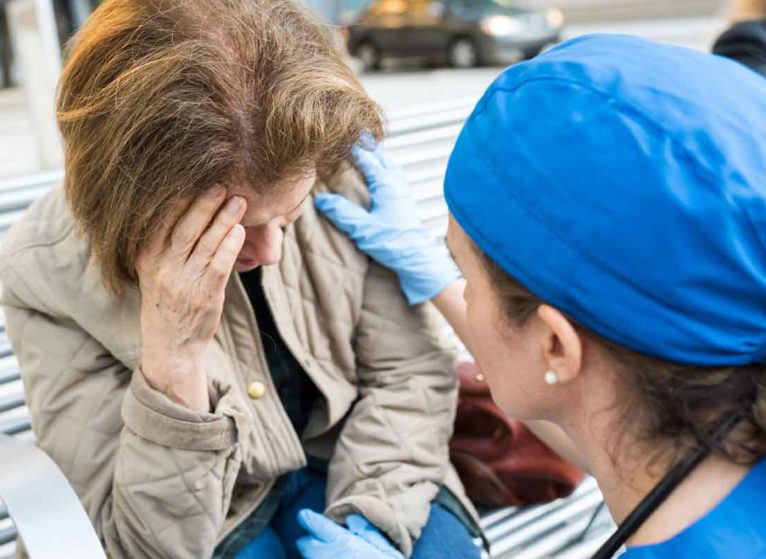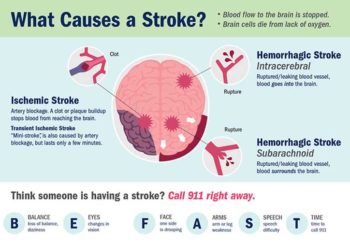Strokes are serious emergencies. They happen when your brain isn’t getting enough oxygen because there's a problem with blood flow to it. If someone is having a stroke, they need immediate medical attention.
Aneurysms can happen anywhere around your body, including your brain. You can have a brain aneurysm without it causing any symptoms. But, sometimes, they can also lead to a medical emergency.
Some people confuse strokes and brain aneurysms as always being the same thing. They aren’t, although they’re related. Aneurysms are one of the possible causes of a stroke. But not every stroke comes from an aneurysm (in fact, most of them don't).
Strokes vs. aneurysms: how are they different, and how are they related? When should you pick up the phone and dial 911?
What Are Strokes? What Are Aneurysms?
A stroke happens when blood isn’t getting to your brain cells or when a blood vessel bursts, causing bleeding inside your skull. These 2 causes describe the 2 types of strokes: ischemic and hemorrhagic.
“Ischemic strokes are the vast majority - probably 80 to 85% of all the strokes we see coming into the hospital are of that variety,” says Andrew Southerland, MD, a stroke specialist at UVA Health. “Ischemic means that the brain is not getting enough blood flow and oxygen.”
These kinds of strokes happen when blood flow to your brain is interrupted by something blocking the inside of a blood vessel, like a clot. That stops blood from flowing to where it needs to go.
Aneurysms are different. They happen when the wall of a blood vessel gets weak and forms a bulge, like a balloon, pushing out from the wall. Unlike an ischemic stroke, blood still flows inside the vessel.
Generally, aneurysms don’t cause any symptoms unless they burst or rupture (sometimes called a "brain bleed"). The risk of an aneurysm rupturing depends “on multiple factors, such as how large the aneurysm is and where in the brain the aneurysm is located. It's not that uncommon that I'll see a patient in their 80's with a new diagnosis of an aneurysm, and in those individuals, the lifetime risk is exceedingly small,” says Min Park, MD, a UVA Health neurosurgeon.
But, if an aneurysm in your brain does rupture, blood stops flowing to your brain cells. Instead, it leaks out, seeping into spaces in your brain or between your brain and skull. That is a hemorrhagic stroke.
“Hemorrhagic strokes are probably 15 to 20% of the strokes we see,” says Southerland. Patients “get bleeding out into the brain through a ruptured blood vessel. Both ischemic and hemorrhagic causes fall under the umbrella of stroke,” he notes.
Generally, aneurysms don't cause symptoms unless they rupture. But sometimes, an unruptured aneurysm grows big enough to put pressure on your brain. That pressure can cause its own set of symptoms.
Concerned About Strokes or Aneurysms?
If you suspect someone is having a stroke, call 911 right away.
Talk to a UVA Health primary care doctor about your stroke or aneurysm risk.
Strokes vs. Aneurysms: Symptoms
Some of the common symptoms of stroke include:
- Weakness or numbness in the face
- Weakness or difficulty moving on one side of the body
- Loss of balance
- Vision problems, such as loss of vision or double vision
- Difficulty speaking or getting words out
Some symptoms of large unruptured aneurysms are similar, and can include:
- Vision problems
- Headache
- Dizziness
- Eye pain
- Seizures
When a brain aneurysm ruptures, it can cause:
- Sudden severe headache, sometimes described as the “worst headache in my life”
- Vomiting
- Neck stiffness
- Confusion
If You Spot These Signs, Get Help ASAP
The best way to remember stroke symptoms is to know BE FAST:
- Balance — sudden loss of balance or coordination
- Eyes — double vision or lack of vision in one eye
- Face — an uneven smile, one side of the face drooping
- Arm — one arm is weak
- Speech — slurred or abnormal speech
- Time — call 911 at once
No matter what the cause, if you notice someone having any of these symptoms, you should call 911 right away and get help.
Although treatment for these conditions is different in each case, it is important that they get emergency help as soon as possible. It can mean the difference between life and death.



Thank you for this information! At age 75, I know these things are possible even though I’m in good healt.
‘health.’